Ah, the summer of COVID-19. Won’t we have some stories to tell to the grandkids?
For me, it was supposed to be, largely, a Canadian summer. I had two trips planned to the Arctic, and one trip to the Yukon, just shy of the Arctic Circle. Pike. Grayling. Brook trout.
Instead, thanks to the outbreak of coronavirus, it became the summer of the camping “staycation.” And, thankfully, I don’t live in Kansas City. I live within a day’s drive of some of the best wild and native trout fishing on the planet, where achieving social distancing is often just a matter of walking a couple hundred yards away from the Grand Loop Road.
With a little planning, I can leave the house at 8 a.m. and drive east up the South Fork of the Snake, climb over Pine Creek and Teton passes, drive up the Snake with the Tetons as the backdrop, hit the south entrance of Yellowstone and stop for lunch at Old Faithful. From there, I can drive down the Firehole and the Madison, climb Targhee Pass and drop down into Island Park and gaze out over Henry’s Lake. It’s all downhill from there, as I follow the Henry’s Fork through Ashton and St. Anthony. Even without a tailwind, I can be home before dark. Needless to say, over the years, my kids got their fill of the world’s first national park.
These days, sans kids, if make it a three-day trip, I can fish some of the best out-of-the-way trout water in Yellowstone, and take in an order of chicken parm at the Wild West on the way home (and if you do have the kids along, the homemade mac and cheese is aces). And, while folks have been loathe to hop a plane of late — and I can’t blame them for not wanting to put the family on a flying virus tube with Karen, who chooses to wear her cloth mask to cover her eyes while she snores — I have noticed quite a few folks driving through the area, trying to achieve a vacation without boarding passes, late flights, passports or the $15 snack box.
More power to them, I say. If you and your family like to fish, it’s as good a summer as any to visit Yellowstone National Park. And, given the desire to remain out of the breath clouds of your fellow tourists, it might be the best summer ever to find a stretch of small water in the park and likely have it to yourself. You might still want to wear a face covering, but it will largely be to protect your skin from the bright summer sun.
So, if you’re thinking about a road trip to the park, think about these five less-heralded fishing destinations in the park, where you can make social distancing an effortless endeavor and fuel your family’s summer adventure by catching some wild trout in the process:
Nez Perce Creek
Not only is this first destination a great fishery, it also offers you to share with the kids an important moment in the history of the West. Nez Perce Creek gets its name from the Nez Perce Indian tribe, whose home territory is situated in the Idaho panhandle. In 1877, Chief Joseph led his people through the newly monikered Yellowstone National Park (so named by Congress in 1872) as they fled the U.S. Cavalry led by Gen. Oliver Howard. The Nez Perce were trying to flee the government’s efforts to confine them to a reservation — they were eventually caught at Bear Paw Mountain in Montana where they surrendered to the government before they could reach Canada. As the Indians marched through the park on their journey to remain free, they crossed the Firehole River in late August of 1877, supposedly near the confluence of what is now called Nez Perce Creek.
This is a fun little trout fishery and anglers can enjoy some excellent late summer casting with hoppers and other terrestrial patterns to some sizable browns and rainbows. A significant tributary to the Firehole, Nez Perce Creek, particularly as it flows through a lodgepole forest a short hike away from the Grand Loop Road, provides a thermal refuge for trout that move out of the Firehole as summer progresses. The Firehole, because it flows through several geyser basins, gets a big influx of hot water. When coupled with hot daytime temperatures, the river becomes only marginal trout water in July and August. But tributaries, like Nez Perce Creek, suddenly become really good fishing destinations.
The easiest access to the creek is right along the Grand Loop road north of Old Faithful. The best fishing access, though, is along the Mary Mountain Trail, just south of where the creek flows under the highway and eventually merges with the Firehole. Park at the Mary Mountain trailhead and walk a mile or two. It’s an easy, family friend hike, and you’ll get into a gorgeous lodgepole pine forest, and the creek’s temperatures will be suited for the 10- to 17-inch trout you can catch on dry flies.
Lava Creek
Lava Creek is a small brook trout stream that flows out of the mountains and into the Gardner River near Mammoth Hot Springs. The best place to access Lava Creek is at the Lava Creek picnic area east of Mammoth, but there are other access points, and all will take anglers to some great holding water for wild brookies that might average 8 inches in length. It’s a great place to take kids fishing, and, now and then, you might latch into a fish that stretches the tap a foot or more.
It’s also a great creek if you like waterfalls. Undine Falls can be viewed from the Grand Loop Road just a little ways downstream of the picnic area. If you fish upstream of the picnic area, carry bear spray. While I’ve never seen a grizzly near the picnic area, I have seen several black bears — I think they’re attracted to the area by the scents of tuna sandwiches and pasta salads that get passed back and forth over the table a few times each summer day.
Just be smart when you’re fishing, and make a lot of noise. If you see a bear, don’t run. Walk away slowly, and have your bear spray ready to go.
Grebe Lake
Grebe Lake is a small, high-elevation lake that can be reached via a 3-mile-long trail that starts along the Norris-to-Canyon Road. The National Park Service is reintroducing native Arctic grayling and west slope cutthroat trout to the upper Gibbon River drainage, and Grebe Lake sits atop that drainage. The hike in is pretty mellow, and the fishing from shore can be really good, particularly if you’re willing to wade out a bit into the deep water and cast over a shoreline dropoff. If you have the fortitude to tote a float tube down the trail, your options are virtually limitless.
Don’t be intimidated by the hike — we took our kids there many times, and, in fact, my son Cameron took his first steps along the shores of Grebe Lake.
Up until just a few years ago, non-native adfluvial (lake-dwelling) grayling and introduced rainbow trout occupied this lake. In recent years, the Park Service has removed all the rainbows and replaced the adfluvial grayling with fluvial grayling that migrate between the lake and the Gibbon River. It’s a great place to go to catch these reintroduced natives, and the hike starts through a dense grove of standing dead timber, a reminder of the historic fires of 1988.
Tower Creek
Just east of Tower Junction is Tower Falls, and above Tower Falls, lies Tower Fall Campground. Anglers in search of a really cool backcountry experience in Yellowstone can park at the campground and then follow Tower Creek upstream into the wilderness. The stream is loaded with wild brook trout and the occasional wild rainbow, and what it lacks in numbers of big fish, the creek makes up for in sheer beauty.
It flows through a stunning mountain meadow lined by white pines and lodgepoles and its fish are eager to hit dry flies all summer long. It’s a great little afternoon getaway if the family wants to walk to the bottom of Tower Falls, and it’s an excellent place to find some solitude among the Yellowstone tourist throngs.
Obsidian Creek
This is another great wild trout fishery, but if you’re after big fish, you’re probably better off looking elsewhere. This stunning meadow stream is full of wild brook trout and runs along the Grand Loop Road between Norris and Mammoth Hot Springs. For families, this is probably the best place in all of Yellowstone — it’s a kid-fishing paradise (and one of the few places in the park where the use of bait is allowed).
Obsidian Creek winds its way through a maze of willows, and, in addition to being a great place to catch brook trout (on just about every cast, mind you), it’s also an excellent place to see moose, elk and the occasional bear. In the evenings, just as the sun starts to set behind the mountains, you can exchange yips and howls with the coyotes across the valley that are waking up and heading out to hunt for the night.

Honorable mentions
There are so many great small streams and easy-to-reach lakes in the park that it would take a lifetime to see and fish all of them. Here are a few more that can be fun, particularly if you’re fishing with kids.
- Blacktail Deer Creek. This small brook-trout stream crosses under the Grand Loop Road west of Roosevelt.
- Soda Butte Creek. This stream is home to Yellowstone cutthroat trout and is situated in the far northeast corner of the park.
- Cascade Lake. This small lake is reached via a trailhead just north of Canyon, and it’s home to grayling and cutthroat trout.
- Bacon Rind Creek is a great little brook trout and cutthroat trout fishery that runs into the Gallatin River in the park’s northwest corner.
Yellowstone is a great destination for families, and for families who like to fish, it’s an even better place to wind up after a summer road trip. Give yourself a few days to explore — while the fishing is great, the scenery and the wildlife are more likely what the kids will remember. They may not remember the 15-inch brown that sucked in a hopper on Nez Perce Creek, but they might remember the stunning visage of Yellowstone Falls or the timely eruption of Old Faithful. Or maybe they’ll marvel in the sight of a mother grizzly with her cubs meandering along the road, or the herds of bison rolling in the summer dust as geysers go off in the background.
Who knows? Maybe they’ll have some great stories to tell their own kids and grandkids about the summer of COVID-19 — the year they took a drive to Yellowstone and fished for wild trout.




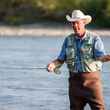
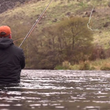
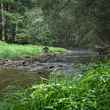
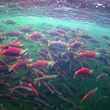


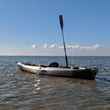
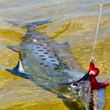


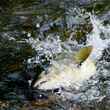
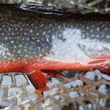



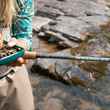
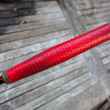



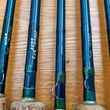



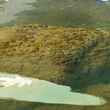
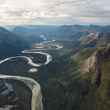
Comments
Mark replied on Permalink
While I like diversity, and see the need for it in our trout waters, when I think of Yellowstone National Park -- I think of the native bison herds, the elk, the deer, etc. and the native Yellowstone Cutthroat trout. That's what is most important, at least to me, is connecting with an almost pristine environment that reflects what was there over 100 years ago, and catching native cutthroat.
Larry replied on Permalink
Really- right now Yellowstone is totally slammed with tourist so you might want to wait.
Nothing like naming a small stream to spoil their attraction with too many folks focusing on them- it doesn't take a lot of pressure to ruin a good small stream. The time for "kiss and tell " fishing is over- naming streams simply adds up to too many people.
Bohemian Angler replied on Permalink
Most streams mentioned here are great “front country” streams accessible via road. I’ve fished the backcountry there for over 25 years.......I’m thankful the truly great streams were omitted from mention! Great article
Wayne Thorpe replied on Permalink
9 "intimate" spots in a big old national mag. Thanks a lot. I know everybody's gotta make a living but there must be a better way.
Jake Petrosky replied on Permalink
Great article! I’m planning a trip to Yellowstone with my family and was looking for 1-2 small stream options to visit after or between sightseeing and there is not a lot of info available.
Pages